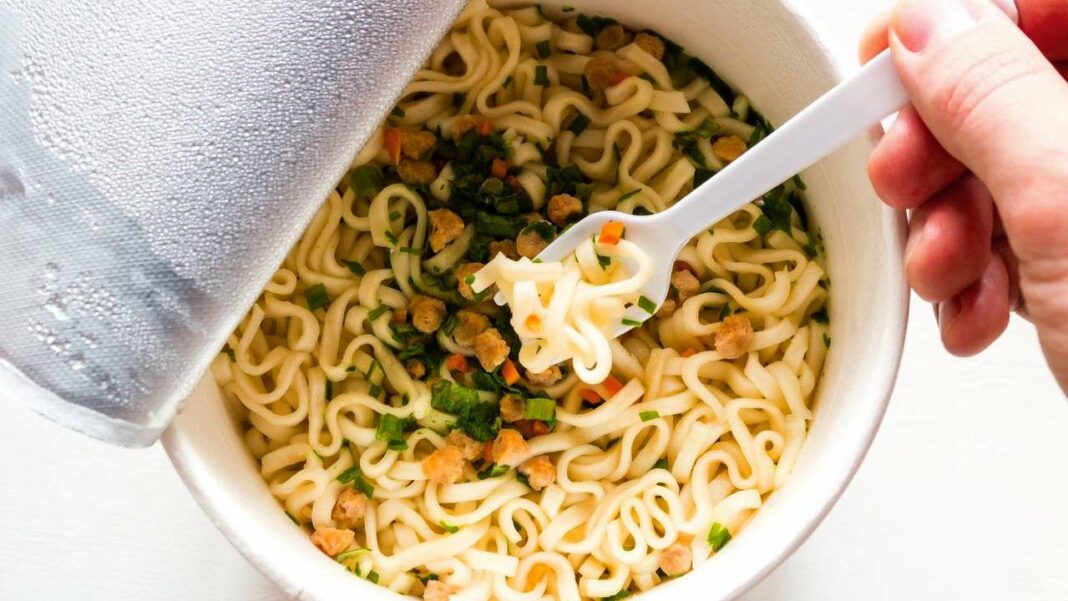Thomas Maggi, a young man, opts for instant noodles due to their speed and affordability, consuming them twice daily. The popularity of instant noodles has surged in France, with 110 million packets sold in 2023, largely imported from Asia. However, an investigation reveals concerning additives in the seasoning, including monosodium glutamate. In contrast, traditional ramen, crafted with fresh ingredients and a homemade broth, offers a far superior flavor, emphasizing the benefits of taking time for quality meals over quick fixes.
For Thomas Maggi, a young man featured in our recent report, lunchtime today means instant noodles that are ready in just three minutes. ‘I need to leave in 20 minutes, so I only have 5-10 minutes to eat. I’d rather do this than waste time. If not, I would have spent an hour preparing and then washing everything afterwards,’ he shares.
This young man enjoys his instant noodles twice a day, finding them to be a tasty, fulfilling, and economical choice. The cost? Just 70 cents. ‘It really fills me up. It’s just water and pasta, so what could be better? Honestly, I don’t think it’s unhealthy. I’ve never looked at the ingredients, but for me, it works,’ he adds.
The Allure of Instant Noodles
Quick, convenient, and budget-friendly—these colorful packets have captured the hearts of younger generations, with prices ranging from 50 cents to 3 euros. The demand for these products has surged, with 110 million packets sold in France in 2023, doubling over the past decade. Most of these instant noodles are imported from Japan and other Asian countries, with China leading as the largest consumer, purchasing a staggering 42 billion packets each year.
But what lies hidden within these enticing recipes? Our investigative team visited a laboratory to analyze a seasoning packet for the broth. The findings were surprising: it contains around ten ingredients that are not particularly recommended. ‘We found additives like flavor enhancers, colorings, and citric acid, among other flavors,’ reveals Clémence Feuillet, a project manager at Agrotec.
This mixture of powders is quite different from the natural products you might find at home. ‘These are processed ingredients that are not typically available to the general public,’ points out Marine Malo-Christofidis, a product development manager at Agrotec.
One ingredient that raises eyebrows among scientists is monosodium glutamate, a flavor enhancer. When consumed in excessive amounts, it may lead to health issues such as headaches, elevated blood pressure, and increased insulin levels, according to Clémence Feuillet. This additive is commonly used by manufacturers to mimic the flavors of the beloved Japanese dish, ramen.
The Art of Traditional Ramen
To gain deeper insights, we spoke with Cédric Allani, a ramen chef trained in one of Japan’s top culinary schools. He emphasizes that the noodles in instant packets are worlds apart from traditional ramen. ‘We often question whether these packets contain any natural ingredients. From everything I’ve read, the only thing is ‘white onion, 0.2%,’ he notes while examining the packaging.
In his restaurant, everything is made from scratch using fresh ingredients such as ginger, white radish, and aromatic herbs. ‘A good broth is quite simple: fresh vegetables and water, simmered for a few hours, creates a solid base for a delicious ramen,’ Cédric explains. Additional toppings like chicken, eggs, and seasonings elevate the dish’s flavor, ready for tasting.
The industrial broth pales in comparison to a homemade version. Spending a little extra time preparing your own or enjoying a bowl at a restaurant is worth it. Expect to pay around 10 euros for a traditional ramen dish that delivers authentic flavor.
